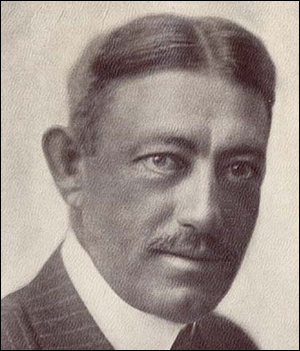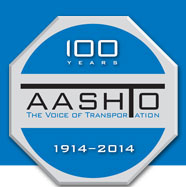
March 26, 1914
One Hundred Years Ago Today in Transportation...

His name was Henry C. Ostermann and, less than nine months after the Lincoln Highway Association (LHA) had been established to promote the creation of that route and close to only five months following the nationwide dedication ceremonies for that road, he spoke to a group in Delphos, Ohio, about that ambitious coast-to-coast enterprise.
The 39-year-old Ostermann was LHA's consul-at-large and he discussed the status of that transcontinental thoroughfare with what the Indiana-based Fort Wayne Journal-Gazette newspaper called "an enthusiastic gathering of business men" in a room provided by the Delphos organization Commercial Club. Ostermann emphasized the progress that had already been made in promoting and building sections of that road within just a few months. "Lincoln Highway Sentiment Grows in Every State" was how a key theme of his talk that day was headlined in the Journal-Gazette newspaper article.
In sketching out the benefits of the Lincoln Highway for communities along its route, Ostermann made reference to the anticipated heavy volume of motor vehicles traveling to California in 1915. The two major events for that year that were expected to bring heavier-than-before traffic to the Golden State were the Panama-Pacific International Exposition taking place in San Francisco and the Panama-California Exposition to be held in San Diego.
While the official purpose for those expositions was to help commemorate the debut of the Panama Canal by that time, Ostermann and his fellow good-roads advocates in LHA saw those events as great opportunities to demonstrate the benefits of the Lincoln Highway in facilitating long-distance travel from one coast to another. An estimated 25,000 automobiles were expected to make their way to California in 1915, according to Ostermann, and it was also believed that 80 percent of those vehicles would be starting out from east of the Mississippi River.
In outlining that big-picture scenario for traveling to California, Ostermann also focused a number of his comments on the Lincoln Highway in Ohio itself. He told the group in Delphos how farmers' organizations were being formed in various parts of the state to promote beautification efforts on the countryside along the route. As the Journal-Gazette reported, "Mr. Ostermann gave his opinion that not only the cities and towns along the route would be benefited but that the farm property on the Lincoln way would increase in value, thus benefiting the farmers in a financial way as well as giving them an improved road."
On the specific subject of improved roads, Ostermann also used his presentation to describe other efforts to showcase and build the Lincoln Highway within Ohio. A business organization in the city of Mansfield, for example, had just raised funds to construct three miles of road in that area and was also placing signs along the segment identifying it as part of the Lincoln Highway. The section of that route between the Ohio cities of Galion and Bucyrus had been similarly marked as being part of the coast-to-coast highway. In addition, businessmen in Bucyrus were planning to improve a mile of the highway near that city.
As an example of what was being done elsewhere in the nation to help promote the Lincoln Highway, Ostermann touched upon how members of an LHA-affiliated group in Nevada had marked 28 miles of the route in that state.
Osterman's talk to that group of businessmen in Delphos offers a helpful and interesting snapshot of the status of the Lincoln Highway at that point in its development, but it also provides some insight into his own depth of knowledge and passion when it came to that enterprise. Ostermann was widely acknowledged even by that time as one of the leading and most authoritative champions of the highway, not only in talking about it in front of various groups but also in traveling along that route himself.
"H.C. Ostermann, in his capacity of Consul at Large for the Lincoln Highway Association, has been constantly driving back and forth over this route for the past two years, both Winter and Summer," reported the New York Times about a year-and-a-half after his presentation in Delphos. "He is probably better qualified to note the improvement of the road and the increase in tourist travel than any other individual."












